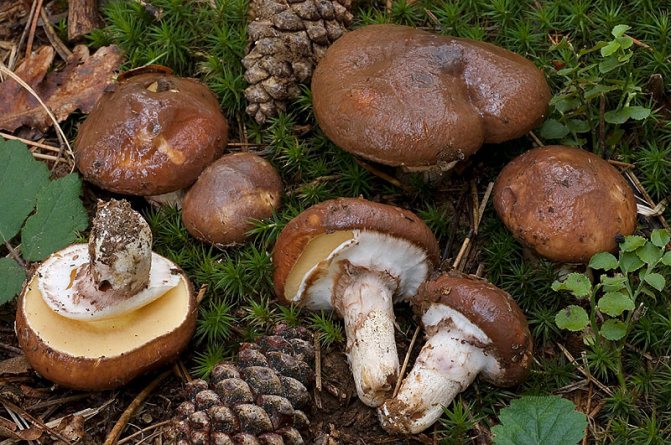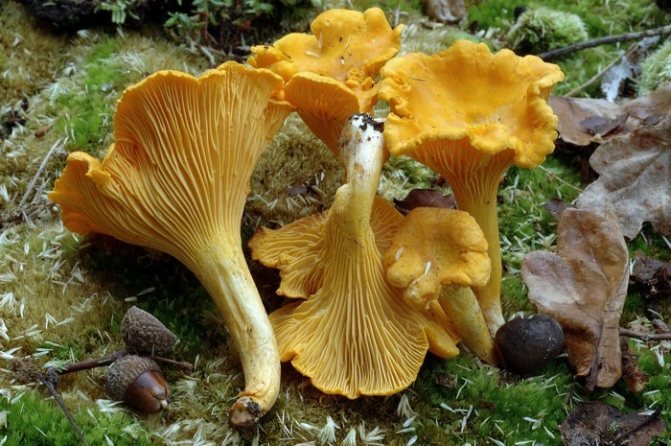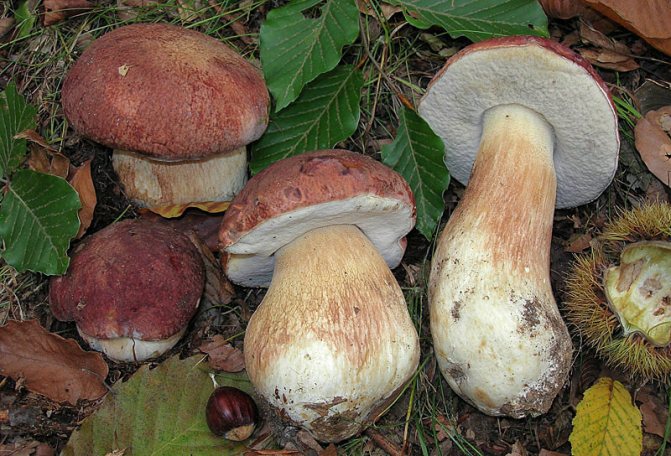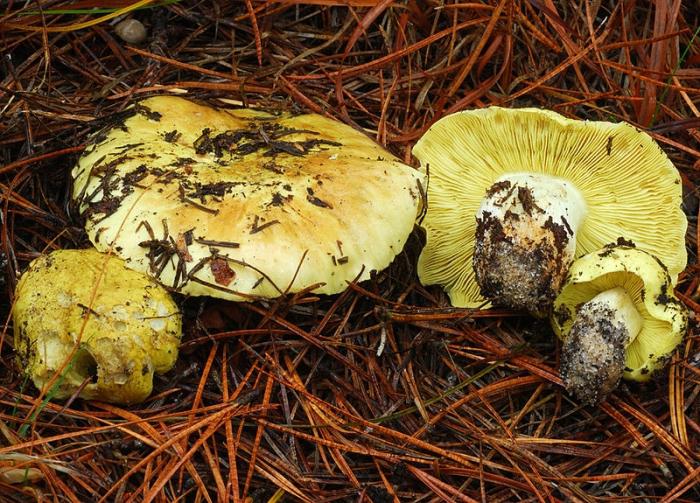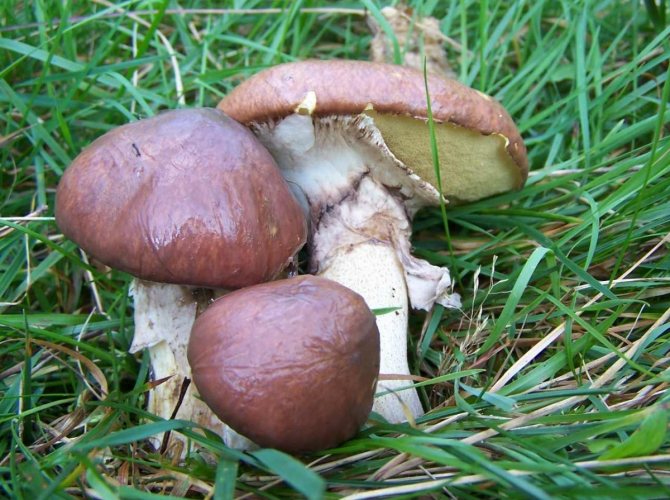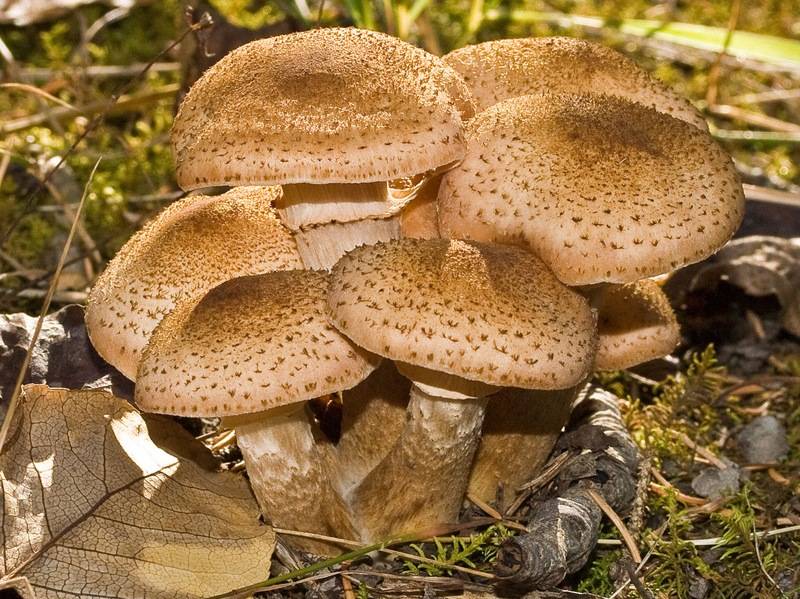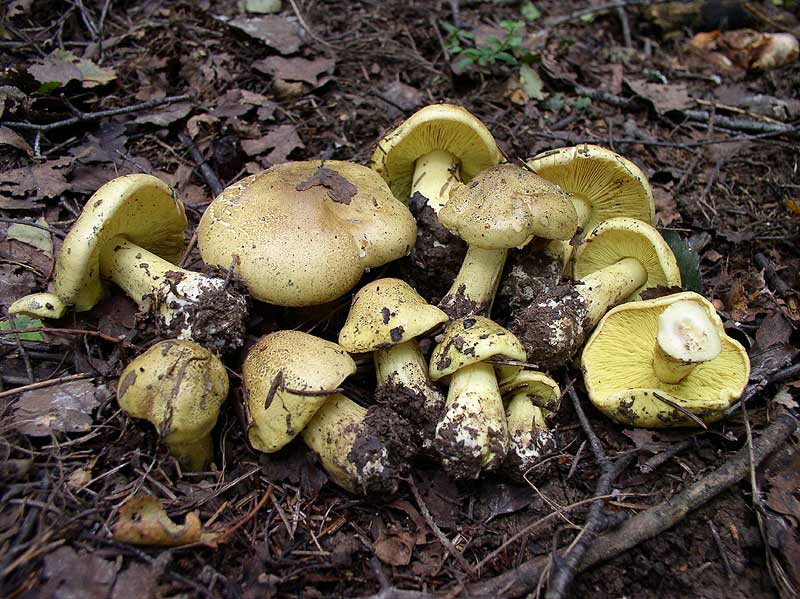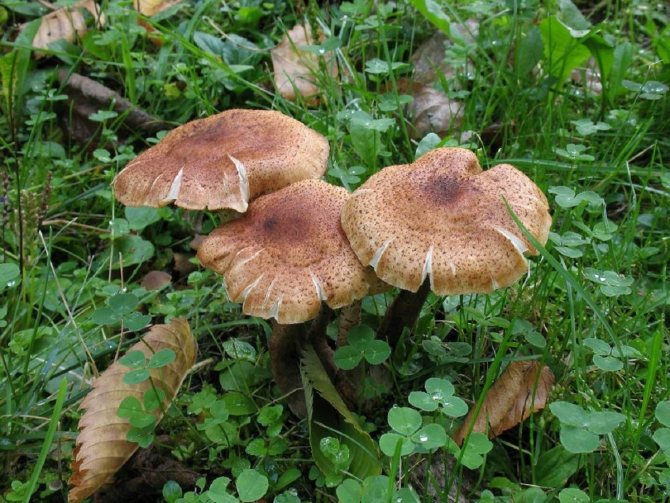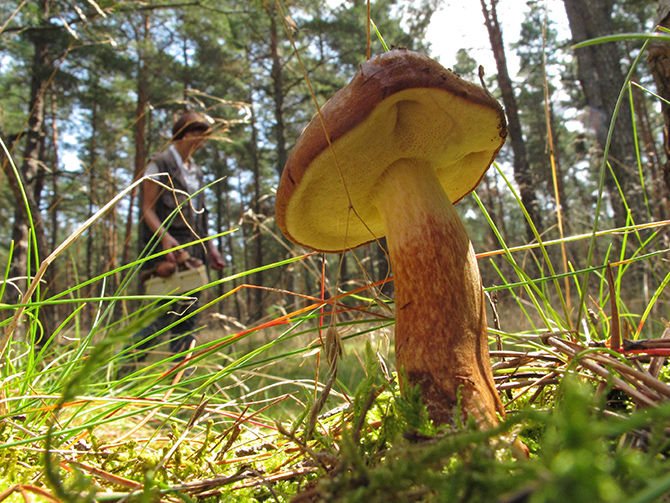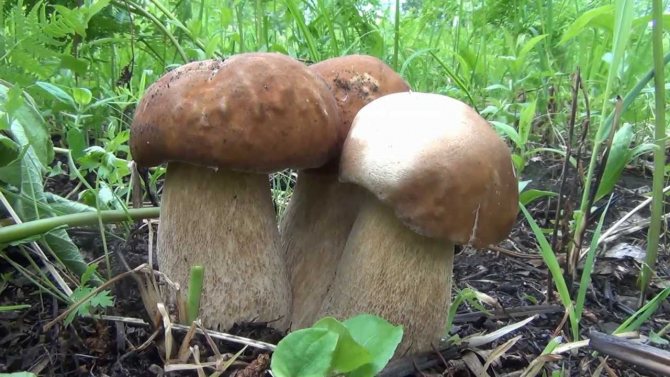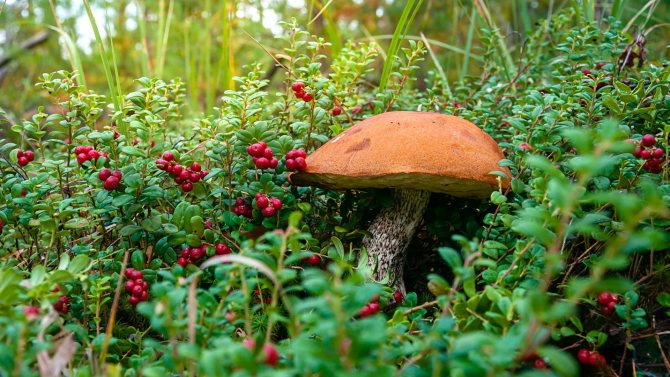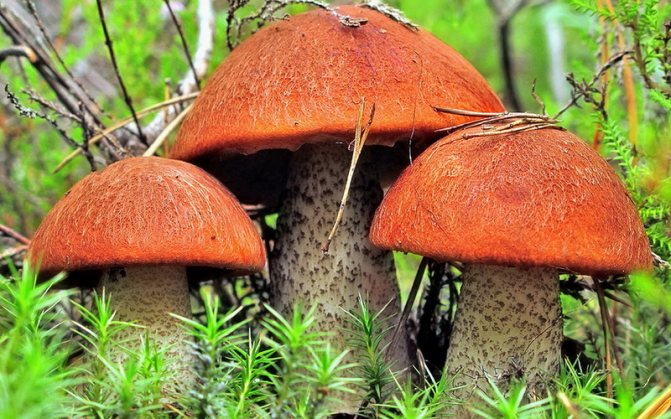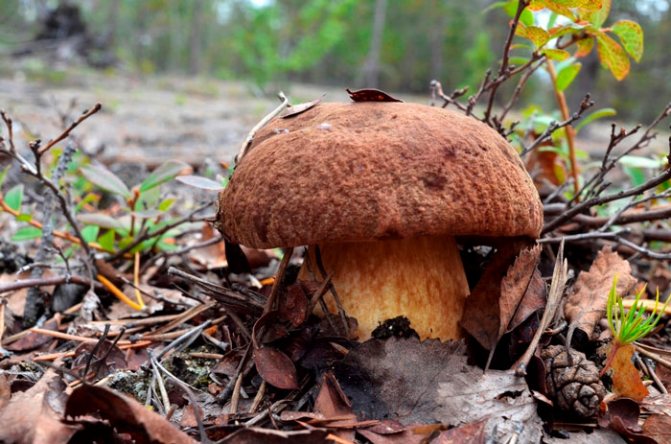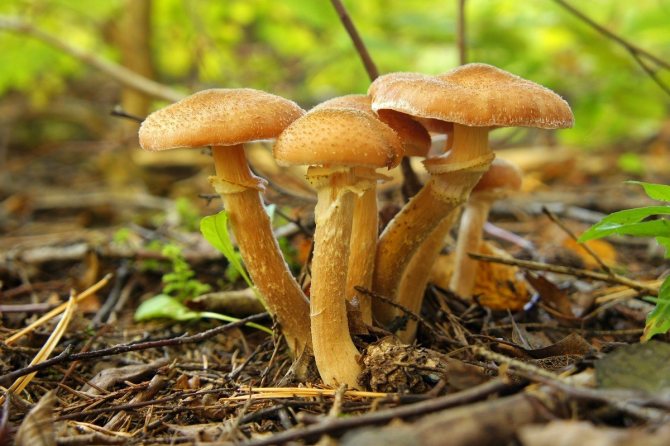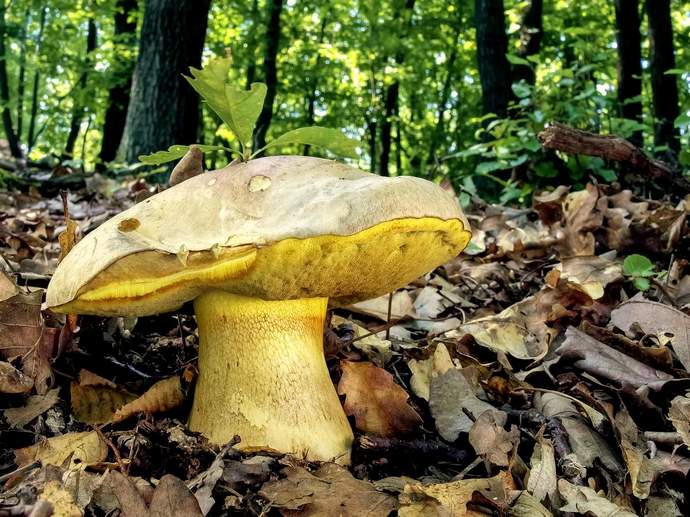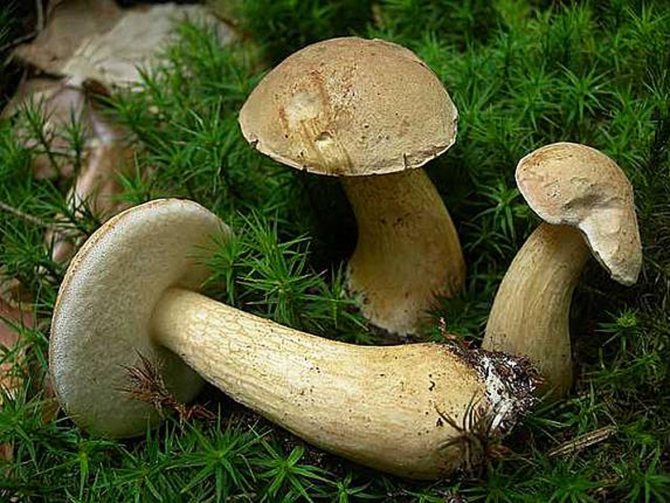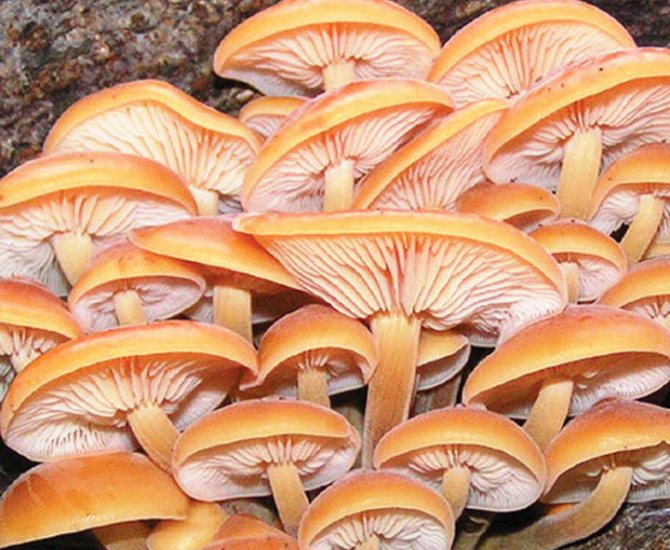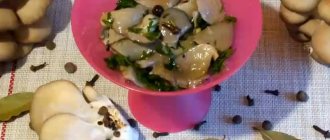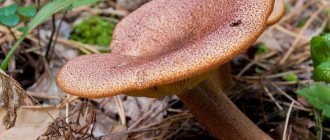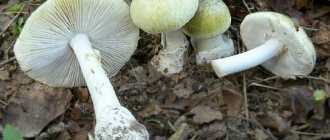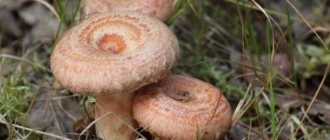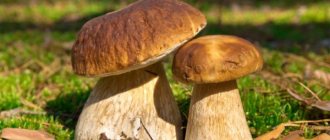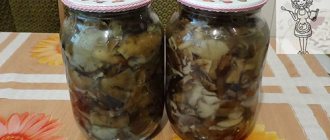general characteristics
According to the degree of edibility, the types of autumn mushrooms are divided into:
- Edible. The most delicious and aromatic white, boletus, milk mushrooms, belong to the first category of taste;
- inedible;
- conditionally edible;
- poisonous (fly agaric, pale toadstool).
This classification depends on the percentage of toxins. The more of them, the less edible the selected specimen.
To get rid of the bitterness of conditionally edible mushrooms, you need to soak them for several hours, rinse them in running water several times and only then cook. This process takes a lot of time and requires patience.
Video: Mushroom poisoning! Symptoms and first aid!
First aid is as follows:
- it is necessary to avoid dehydration and help get rid of the symptoms of poisoning, induce vomiting after drinking large amounts of warm boiled water and pressing on the root of the tongue
- it is also necessary to rinse the stomach for those who ate the same mushrooms, but there are no signs of poisoning until the symptoms become noticeable
- dehydration can be detected by a change in the color of urine: it becomes dark, as well as by fewer or no trips to the toilet
- the patient should be provided with plenty of drink, it is better if it is water
- if diarrhea or vomiting has already begun, then sports drinks (not energy) will help here
- the patient can eat vegetable, chicken broths, which will provide the necessary nutrition with water and nutrients
- you can not drink drugs for diarrhea (with diarrhea, toxins are removed from the body)
- it is better for the patient to reduce physical activity, sleep more, so that the body will recover sooner
Remember that first aid is not a substitute for treatment. If you are dehydrated, which you cannot cope with on your own, you need to see a doctor.
Edible mushrooms
The best mushroom season is autumn. Evening and morning coolness has a good effect on the growth of myceliums. Autumn, according to the collection period, is divided into early and late. Each of them has its own characteristics and variety of species.
Early autumn views
The beginning of September is a great time to collect autumn delicacies. Some of the species are still bearing fruit since summer, some are just emerging.
They grow on fallen trunks and stumps, abundantly covered with moss. Large groups appear and disappear in waves. Therefore, it is good to look for them in familiar places. Their colonies do not change their place of growth until the age of 13-15. It must be collected carefully, without jerking or damaging the main underground part of the mycelium.
Chanterelles are translated from Old Russian as "yellow". It is better to look for fox mushrooms in autumn on acidic soils, in deciduous or mixed forests. Their external description is colorful. A cap in the shape of a cone or funnel, bright yellow or orange, stands on a dense tubular stem.
The inner side of the cap is covered with plates of medium thickness. The pulp of the fruiting body is tough, so chanterelles are more often boiled. Sometimes edible chanterelles are confused with conditionally edible ones. They have a similar external description: the same conical cap, color. But there is no waviness around the edges. The false chanterelle has a rounded edge. In this case, the details matter. Chanterelles love moisture, and people collect them immediately after the rains in September.
Champignon
Field and meadow champignons are often found in rare withered autumn grass, in glades or in fields. They prefer good lighting and slightly acidic soils.
Another tasty and healthy type of autumn forest organisms. The name speaks for itself, red, fiery hats are visible from afar. They can be found in coniferous forests. Young organisms have a convex, slightly rounded cap shape. Then it becomes even, reaching a size of 17-20 cm. This species grows up to 6-8 cm. It is good to salt, pickle or canned mushrooms. The second decade of September is the best time to collect and harvest them.
In all regions of the current Russian Federation, mushrooms grow in late autumn - russula. Their hats come in different colors - red, gray, lilac, slightly yellow and even spotted. The color depends on the humidity of the climate in which they grow. According to the degree of edibility, they are divided into edible, slightly edible and poisonous. The structure of all subspecies is similar. The pulp is fragile, and the surface is covered with a thin, slightly sticky film, which can be easily removed if desired.
White mushroom
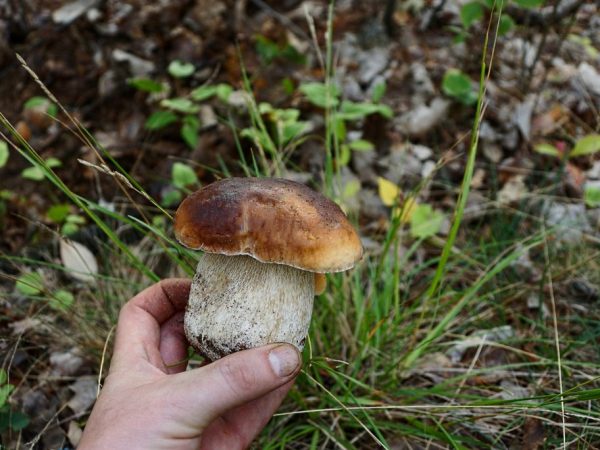
White mushroom can be eaten raw
The most famous and popular mushroom is the king of the forest - the white one. The harvesting season begins in mid-summer and lasts until October. It got its name due to one feature: the pulp does not change its white color even when dried. The demand for them is always high, for several reasons. The pulp of these organisms is aromatic, dense and tasty. They are easy to clean and cook. Even raw, they are edible. Therefore, they are popular among raw foodists. Their hats are red or brown, large in size, up to 30 cm in diameter. If the weather is humid, the surface becomes sticky. During drought, cracks appear along the edges. The leg is thick, keg, reddish and high.
It is better to look for these noble individuals in coniferous, oak or birch groves. Closer to swamps, where there is a lot of peat, they are rare.
Late autumn views
Late autumn is good in its own way. The forest is already empty, the foliage begins to fall off, the air becomes clearer and fresher. At this time, late autumn species appear:
- milk mushrooms of all colors;
- winter mushrooms;
- oyster mushrooms;
- greenfinches.
Together with the cold weather, at temperatures below 10 ° C, mushroom flies disappear.
Pine rows appear under the pines and poplars.
Lamellar species of late autumn mushrooms form a yellowish mycelium and settle in open meadows. The number of individuals in one group reaches 30-35 pieces. Milk mushrooms have several subspecies. They are black, peppery, blue, white and gray.
Advantages of this species: they are found in different areas, throughout Russia and the absence of poisonous twins. Salted and pickled milk mushrooms have no flavor analogues.
There are about 50-60 winter mushrooms on one stump. The caps of young organisms look like a dome of light beige, slightly slippery on top. They are held on a thin, dense leg.
The population is parasitic, it forms mycosis with willows, poplars or other deciduous trees.
Read also: Tinder fungus real: description, application features, medicinal properties and reviews
They got the name Zelenushki because of their color. This species thrives in most regions of Russia, in mixed, deciduous and coniferous forests.
Outwardly, they look like russula. Fruiting continues until severe frosts and snowfalls. Brown specks are sometimes visible on the cap. The middle is slightly concave inward. With high humidity, a light layer of mucus is noticeable on its surface. The pulp has a pleasant aroma, yellowish tint and dense texture. The leg is cylindrical and low in height.
Oyster mushrooms, like honey mushrooms, grow on old dead trees. For their development, a large amount of cellulose is required. October is the best time for this late look.The pulp always has a certain density. The surface is shiny with a sticky top layer. The aroma is weak. Old fruit bodies are best boiled because of their hardness and dryness.
Tips for the mushroom picker
In October, you can get an excellent harvest from a wide variety of mushrooms, but when going into the forest, you should take care of safety. If you are not an experienced mushroom picker, you need to know a few simple rules to avoid picking up poisonous species. After all, October is their time too. For example, by chance you can collect dung beetles, and if you consume these mushrooms with alcohol, you can get poisoned. There are also false mushrooms - these dangerous poisonous species are very similar to ordinary mushrooms and only an experienced mushroom picker will be able to distinguish them.
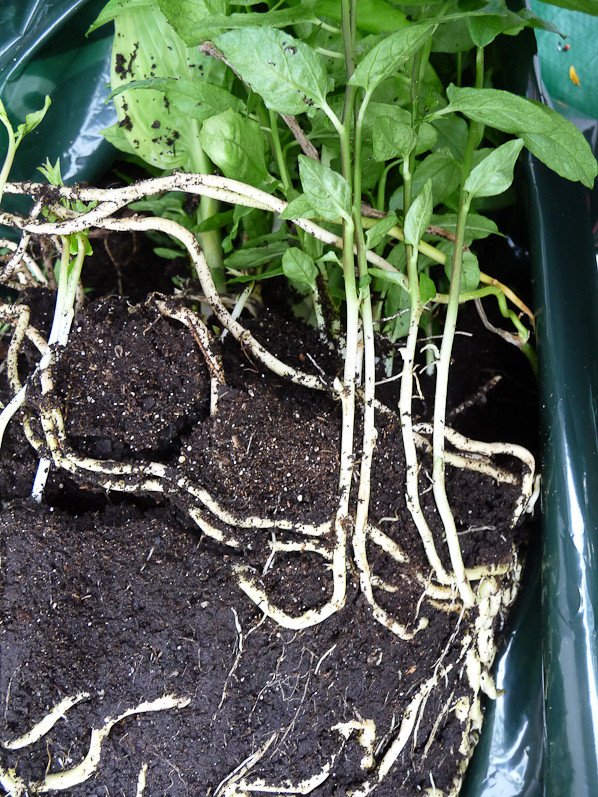

Never eat mushrooms raw, even if they are edible. Untreated mushrooms, even edible ones, can cause acute poisoning or stomach upset.- Observe the rules of orientation, take a compass and a phone.
- Do not pick mushrooms that are spoiled or have bulges on the stalk, expecting to cut the bad ones at home. Collect only good fungi. Therefore, when you cut the mushroom from the stem, break the cap to check for worms.
- Take a first-aid kit with you, anything can happen in the forest, so a bandage and iodine should always be at hand.
- Collect only familiar mushrooms in which you are confident.
- It is advisable to harvest the autumn harvest with an experienced mushroom picker. There are poisonous types of mushrooms that an amateur cannot distinguish from edible ones.
Poisonous and edible autumn field mushrooms of Crimea
All these simple rules must be followed. This guarantees the safety of your health, and sometimes life.
Inedible mushrooms
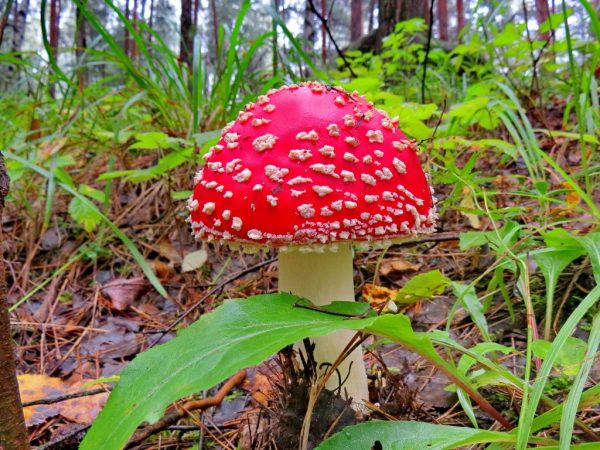

Poisonous mushrooms are common in the forest
Pick mushrooms carefully.
Inedible varieties include:
- toadstools;
- the rows are greenish;
- the rows are sulfuric;
- Amanita muscaria.
Toadstools are among the most poisonous forest mushrooms. Toxins are able to penetrate the skin directly into the bloodstream, causing severe bouts of vomiting and diarrhea.
Benefit and harm
The beneficial properties of mushrooms are due to their chemical composition, which includes the following substances:
These elements are essential for the body to function properly. During the period of infectious diseases, regular consumption of dishes with the addition of such ingredients helps prevent diseases, stimulates the immune system. Some types are used in pharmaceuticals to create medicines: ointments, tinctures and tablets. Used to treat certain diseases:
- cardiovascular;
- urolithiasis;
- sclerosis;
- cancerous and other tumors;
- gout;
- rheumatism.
Mushrooms for diabetics are an indispensable tool for lowering blood sugar.
But for people suffering from diseases of the gastrointestinal tract, food with mushrooms is contraindicated. Because they, especially in the legs, contain an excess amount of chitin, which causes fermentation in the intestines and prevents digestion.
It is dangerous to collect forest organisms growing near highways, factories, garbage dumps or residential buildings. This is due to the fact that their fruiting bodies are arranged like sponges and absorb all the toxic substances of their environment, from the air and soil. Collecting "forest meat" in contaminated areas leads to radiation sickness.
Useful properties of a row
Edible ryadovka mushrooms are an excellent dietary product that has a positive effect on the tone of the gastrointestinal tract, promotes the regeneration of liver cells and the elimination of toxins and toxins from the body. Rows are distinguished by a rich chemical composition, in which a number of substances useful for the human body have been found:
- vitamins of group B, A, C, D2, D7, K, PP, betaine;
- minerals (phosphorus, iron, sodium, potassium, calcium, zinc, manganese);
- amino acids (alanine, phenylalanine, threonine, lysine, aspartic, glutamic and stearic acids);
- natural antibiotics clitocin and fomecin, which fight bacteria and cancer cells;
- phenols;
- ergosterol;
- flavonoids;
- polysaccharides.
DETAILS: Why are cucumbers soft in the greenhouse and in the garden: what to do
Chemical analysis of edible rowovki species revealed antibacterial, antiviral, antioxidant, anti-inflammatory and immunomodulatory properties of these mushrooms. Ryadovka mushrooms have a positive effect in the complex treatment of a number of pathological conditions:
- diabetes;
- normalization of blood pressure;
- arrhythmia;
- rheumatism;
- osteoporosis;
- disorders of the nervous system;
- diseases of the genitourinary sphere;
- oncological diseases.
Mushroom picking season in autumn in the regions of Russia
Abundance of rain, lack of hot sun, night coolness and other features inherent in the autumn period serve as excellent conditions for the growth of mushroom culture.
Since September, mushroom pickers go out on a quiet hunt for delicacies. At the beginning of autumn, summer myceliums still do not finish bearing fruit, but other species are already appearing, for example, mushrooms, mushrooms, aspen mushrooms, boletus mushrooms, russula, talkers.
In October, the ground is covered with fallen leaves, in which mushrooms are hiding. At the same time, the number of individuals is already noticeably decreasing. In the middle of autumn, boletus, greenfinches, russula, ryadovki, black milk mushrooms continue to grow. Mushroom flies that cannot tolerate cold fogs disappear, ceasing to spoil the appearance of the mushrooms. The autumn season is perfect for drying forest products, since the heating is already turned on in the apartments, where you can dry the raw materials well.
Some types of mushrooms tolerate small night frosts. Oyster mushrooms and gray rows, which can be collected before the onset of severe frosts, like to settle on stumps and dead wood.
Places and rules of collection
There are a great many mushroom places in Belarus. As a rule, experienced lovers of "quiet" hunting include the Minsk and Vitebsk regions among the most mushroom places. Many mushrooms grow in forests along the route of the Vitebsk direction, starting from the settlement "Logoisk" and to the settlement "Pleschenitsy", near the villages "Molodi", "Oleshniki", "Mostische", "Krokva", "Takovshchina" and "Pogrebishche". Here you can collect a very good harvest of boletus, boletus, boletus, boletus, honey agarics, mushrooms, chanterelles and russula.
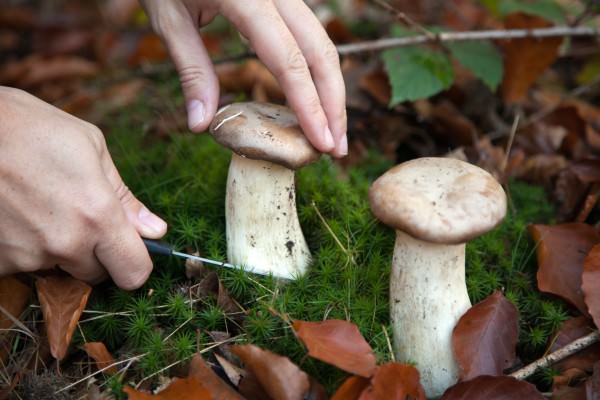

The Khatyn forest, which stretches for several kilometers, is also very popular with mushroom pickers. In Stolbtsovschina, near the Vysokiy Bereg tourist center, it is possible to collect boletus, redheads, chanterelles, brown mushrooms and autumn mushrooms almost throughout the entire mushroom season. A large forest zone is located near the recreation center "Economist" near the village "Ilya". When collecting mushrooms, it is imperative to follow the rules of "quiet" hunting, and process the harvested crop as quickly as possible.
What mushrooms grow in the forest in early autumn
Since after the appearance of the leg connecting the mycelium with the cap, 2 weeks pass before the formation of a fruit body of a decent size, after the rain you can go in search of mushrooms in 1-2 weeks. The harvest peaks in September.
The peculiarity of autumn mushrooms is the rapid appearance of a harvest wave and rapid disappearance. For lovers of this type of delicacy, it is important not to miss the beginning of the collection. The culture prefers to settle in colonies on fallen tree trunks, dead wood, stumps and on the root system of living plants. Woody mushrooms can grow in one place for up to 15 years, until the mycelium completely destroys the host tree.
On one stump, it grows up to several liters of specimens. Young individuals are collected together with legs. If the mushrooms have grown up and the caps have opened, then only the caps need to be cut off, since the nutritional value of the legs is negligible. In order not to disturb the mycelium, it is important to cut the mushroom, and not pull it out by the root.


The name is based on the Old Russian word "fox", meaning "yellow". Mushrooms prefer to settle in acidic soils. The grayish-yellow stem is long and tubular inside. The brown-yellow cap is funnel-shaped with wavy edges. The structure of the pulp is dense with a pleasant aroma. In order to soften the hardness, a long heat treatment is required.
Quite often, you can find a false chanterelle, which is a conditionally edible plant product. Although proper culinary treatment excludes the possibility of poisoning, the taste of this mushroom is much lower than that of a real chanterelle. The color of the false chanterelle is much brighter, and the surface of the cap is slightly velvety. The edges of the cap are neatly rounded.
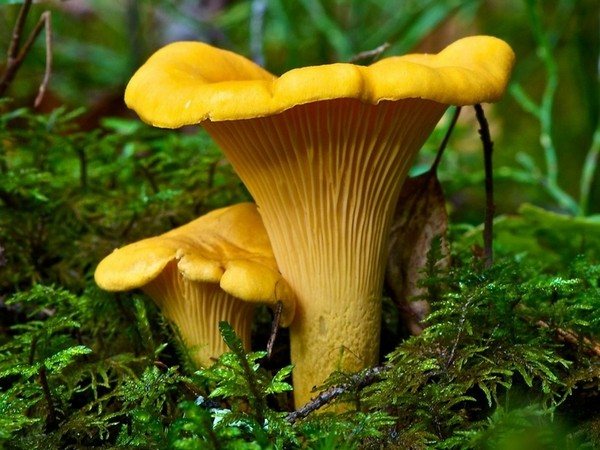

A bright orange-red mushroom loves to settle among the pines. In the place of the break, an orange milky sap with a pleasant resinous odor is released, which turns green when oxidized.
Read also: White mushroom: what it looks like, where it grows, photos and varieties
The cap has a diameter of up to 17 cm. For young specimens it is characterized by a rounded-convex one, and for old ones it is funnel-shaped. Over time, the folded edges of the cap straighten. The leg is cylindrical in shape, reaching a length of 6 cm and a thickness of up to 2 cm. It is often affected by pests.
This population prefers to grow in groups. Included in the first flavoring category. due to this, people consume them fresh, salted, pickled and canned.


A mushroom common in Russia. About 60 representatives of this family are known, conventionally divided into 3 groups:
All representatives are similar in structure and appearance. The hemisphere-shaped hat straightens as it grows, becoming flat. There are individuals with a funnel-shaped cap and edges wrapped up. Edible representatives are painted in greenish-brown tones, and poisonous in bright red. You can also find spotted hats. Depending on the humidity, the surface can be sticky or dry. The top film is easily peeled off.
The cylindrical legs are painted white or yellowish. Inedible species are pink. The dense white pulp becomes more fragile and crumbly with age.
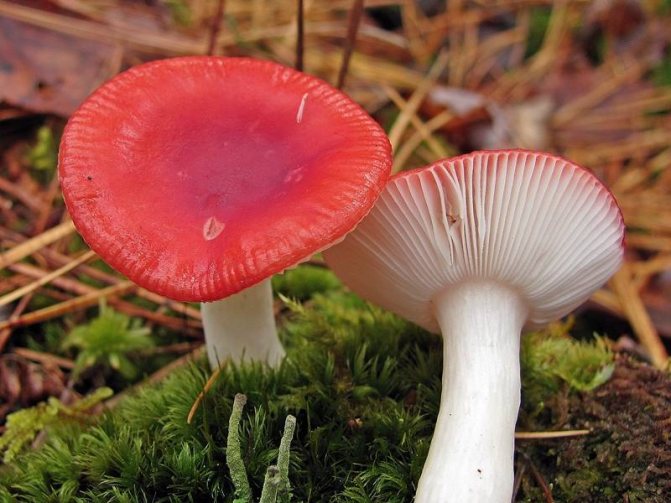

White mushrooms
Full-fledged owners of the forest, which are in great demand, since they have delicious taste. Participate in all types of culinary processing.
The matte cap is slightly convex, it can reach 30 cm in diameter. The color spectrum is from reddish to lemon. The center of the cap is usually darker than the edges. The skin on the surface becomes sticky after rain. It can even crack in dry weather.
Large leg up to 26 cm high, most often lighter than the cap. May have a reddish tint. The shape of the leg is cylindrical, narrowed at the top. Juicy flesh of juveniles is white. Turns yellow over time. Dark brown under the skin.
For settlement he chooses forest zones (coniferous, oak and birch). Dislikes swampy and peaty soils.
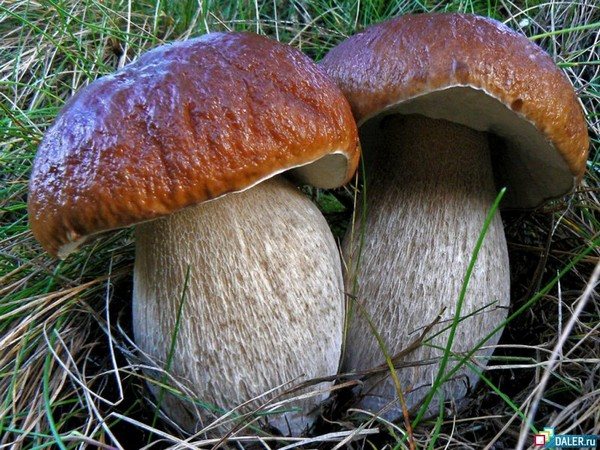

Interesting facts about ryadovka
- In many countries ryadovka mushrooms are considered a delicacy: some species are successfully grown and sold for export.
- It is not difficult to grow a row at home, and the method of cultivation is very similar to the cultivation of champignons.
- Powder from dried fruit bodies of ryadovka is used in cosmetology in the manufacture of facial lotions, which are good for getting rid of acne and excess oily skin.
- The Japanese value the matsutake mushroom no less than the truffle among the Europeans, and fried matsutake is a rather expensive delicacy, because the cost of individual specimens can be about $ 100.
- Lilac-footed ryadovka mushroom (bluefoot): what it looks like, where and how much it grows, when to collect, how it looks, photo, video
- Modern cottage: we make beautiful flower beds near the house
- We understand what mushrooms grow on stumps - Mushrooms
- Is it possible to collect and eat mushrooms after the first frost, why late mushrooms are bitter
Late autumn mushrooms
In the second half of autumn, there are fewer mushrooms in the forest, both edible and poisonous. In addition to the fact that not all mushroom pickers like to walk in the mud during a rainy and chilly period, mushrooms become tough.
The pubescent cap and yellowish mycelium are the hallmark of the lump. Due to the fact that mushrooms prefer to settle in a large family, you can collect a harvest basket from one meadow. Since the mushrooms are well disguised in fallen leaves and needles, they are difficult to notice. Milk mushrooms enter into symbiosis with birches, therefore they are found next to them. Several types of mushrooms are known:
The size of the whitish cap is from 5 to 20 cm. In the center it is concave, slightly covered with mucus, the edge is shaggy. The leg is in the shape of a barrel, hollow inside.
For the village he chooses spruce, birch and mixed forests. There are both single specimens and groups. It is used for food only in a salted form.


Winter mushrooms
The cap grows up to 10 cm. In young mushrooms it is convex, in old ones it becomes flat. At the edge, the color is slightly lighter than the middle, which is yellowish, orange or honey-brown. The length of a thin leg, not exceeding 1 cm in diameter, is from 2 to 7 cm. The structure of the leg is dense. The color is velvety brown, a mixture of red is added on top.
This fungal population is parasitic, growing on damaged or dead deciduous trees, usually willow and poplar.
The name of the mushrooms justifies itself, since even heat treatment does not eliminate the greenish color of the fruit body. They are found in all regions of Russia in small groups (from 5 to 8 pieces), although there are also single individuals. In appearance, they are similar to young russula. They grow in coniferous, deciduous and mixed forests. They bear fruit until they are covered with a layer of snow.
The wide cap (up to 15 cm) of dense structure is rather fleshy. It has a small tubercle in the central part. The color is greenish-yellow or yellow-olive. Sometimes with brownish specks. During the rainy season, the skin becomes sticky.
At the break, the pulp is white, yellowing when oxidized. Since mushrooms have almost no taste, they are usually not attacked by pests. The leg is short and buried in the ground.


For the development of oyster mushrooms, cellulose is required, so they grow on dead wood or old stumps. Since the mushrooms are inconspicuous in appearance, inexperienced mushroom pickers mistake them for inedible.
The color of the cap is variable, from brown-gray to bluish. It is darker in the center. Over time, the cap fades. The shape resembles an oyster. In mature individuals, it straightens. Since a group of mushrooms grows from the outlet, their fruiting bodies often grow together. The surface of the mushrooms is glossy to the touch. At high humidity, it is covered with an adhesive layer. The location of the leg is asymmetric, or it is completely absent. The dense white flesh in young fruit bodies is juicy, in old ones it is tough and fibrous.


Description of mushroom spots
Mushrooms of Belarus prefer to grow on soddy, as well as calcareous and podzolic soils. The humus content in calcareous soils is low, therefore their fertility will be low.
Most of them grow near Vitebsk, Minsk.
The best places to pick mushrooms in Belarus:
- Logoyshchina;
- the village of Ilya;
- the village of Stolbtsy;
- Khatyn section of the forest;
- Talca station.
The mushroom picker maps show you all the routes you need to get to the picking places. Many edible species grow in different parts of Belarus. People specially go to Belarus for various forest gifts, they grow in lighted areas, in coniferous, mixed, deciduous forests, near stumps, roads.
Some specimens grow alone, others in groups.
Edible and poisonous species of autumn mushrooms in the Rostov region
Due to its location in the southern part of the Russian Plain, conditions in the Rostov region are suitable for the growth of mushrooms and berries.Several dozen varieties are edible. Some of them:
- White mushroom;
- boletus;
- rowing;
- oiler;
- gray talker;
- chanterelle;
- morel;
- winter mushroom;
- mushroom;
- champignon.
Hazardous species that need to be able to distinguish from edible species include:
- the row is sulfuric and green;
- fly agaric;
- death cap.
Some mushrooms, like greenfinch, are conditionally edible, which require special processing before use.
How fast do edible mushrooms grow after rain in the fall?
Mushrooms are the fruits of mycelium and mycelium growth. In general, mycelium grows several meters underground, like a spider's web. From time to time it bears fruit. These are exactly the mushrooms that we collect. The largest harvest of mushrooms is observed in autumn after rain.
The growth time of the mushrooms is 2 weeks. But most often you can see the mushroom already on the 5th day. At this time, a leg appears, which connects the mycelium and the cap. Initially, the hat is small, but after 2-3 days its size increases rapidly. That is, after the rain, you can go to pick mushrooms in 1-2 weeks.
How fast do edible mushrooms grow after rain in the fall?
What edible mushrooms grow in autumn, early and late September: photo, list, names
September is a month rich in mushrooms. This time is considered to be the peak. The most interesting thing is that it is at this time that the mushrooms are harvested. In the forest, you can find summer mushrooms, which previously bore fruit well in July and August.
List of September mushrooms:
- Honey mushrooms
- False chanterelle
- Mokruha
- Ryzhiki
- White mushrooms
- Russula
- Chanterelles
- Zelenushki
Honey mushrooms false chanterelle mushrooms False moss russules
What edible mushrooms grow in autumn, early and late October: photo, list, names
During this time, the number of mushrooms decreases. The point is that the nights are getting relatively cold. But at this temperature, the mushrooms last longer until the period of their maturity. There are not so many summer mushrooms at this time. It's time for varieties that like moderate temperatures. The most interesting thing is that it is best to harvest mushrooms at this time. They are stored for a very long time.
List of October mushrooms:
Boletus and boletus boletus can rarely be found. They grow infrequently, their time is running out.
Winter mushrooms Gruzdi Goats
Where do boletus grow?
Boletus are recognized kings of the forest. They can grow in any forest in groups or alone. Mushrooms of the forests of Belarus are especially fond of places where there are blueberries, lingonberries, fly agarics. They love boletus and many anthills. If boletus grew in a spruce forest, then it is a strong brown mushroom with light spots.
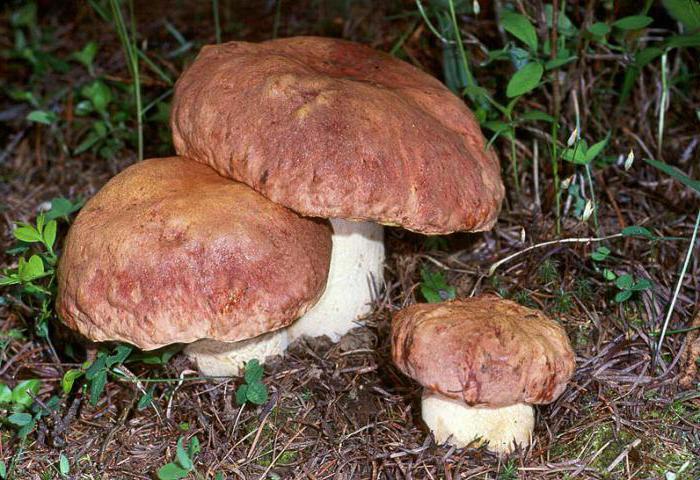

In the pine forest, it is different - dark, sometimes the cap even has a purple tint. Under birch and oak trees grow mushrooms with a long stem, strong pulp and a light brown cap. Their leg is longer than that of other boletus.
What edible mushrooms grow in autumn, early and late November: photo, list, names
In November, it is already quite cold and from the entire summer abundance there are very few mushrooms. These are mainly resistant varieties that grow on tree trunks or stumps. Since frosts are observed on the surface of the soil. Usually, together with the first snow, the mushroom season ends. Occasionally oyster mushrooms can be seen on the trunks.
List of November mushrooms:
- Zelenushki
- Honey mushrooms
- Oyster mushrooms
- Gray row
Greenushki Honey mushrooms Oyster mushrooms
What are the latest edible mushrooms in November: photos, list, names
Basically, at the end of autumn, there are not so many mushrooms in the forest, not only edible, but also poisonous. The mycelium gradually ceases to bear fruit, since the temperature is quite low. In November, few people pick mushrooms, as this is the time of rains and first frosts. At this time, the forest is very dirty.Few people like to walk in the mud and poke around in wet leaves, looking for mushrooms. At this time, there are very few mushrooms that can be eaten. They have an essential feature - a hard hat. Therefore, there are few mushroom pickers who love such mushrooms.
Latest mushrooms:
- Gigrofor
- Gray talker
- Pink varnish
- Winter mushroom
All these mushrooms have a dense texture and a fibrous cap.
Gigrofor govorushka gray Lacquer pink
At what temperature do mushrooms grow in autumn?
Very hot weather is not for mushrooms. In general, mushrooms love humidity and moderate temperatures. The ideal temperature is + 10 + 20 ° С. If summer or autumn is very dry, then you should not count on a good harvest of mushrooms. But even if there are heavy rains in the fall, the mycelium will "get wet". In such weather, there is no good harvest either.
September can be considered ideal, at this time there are a lot of summer mushrooms and cool lovers appear. At this time, you can see boletus, boletus and porcini mushrooms. They can be found even during frosts. It is believed that a temperature of + 5 + 10 ° C is required for the development of the fungus fruit. This is the minimum temperature.
At what temperature do mushrooms grow in autumn?
Despite the decrease in the average daily temperature, a large number of mushrooms can be harvested in autumn. In terms of their taste, they are not inferior to summer ones.

